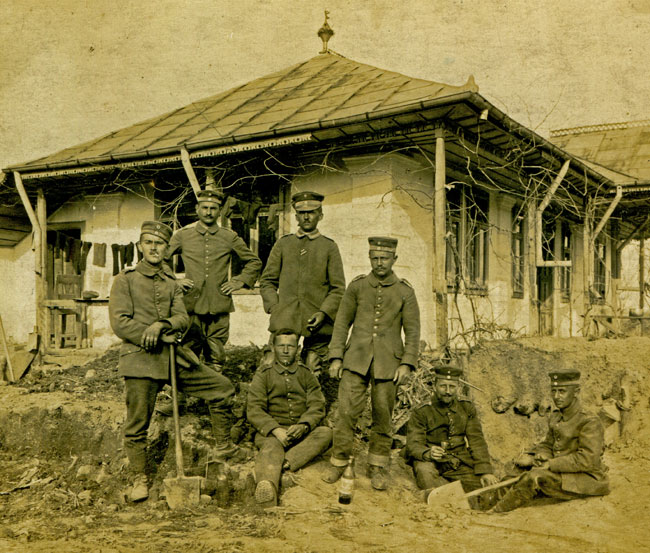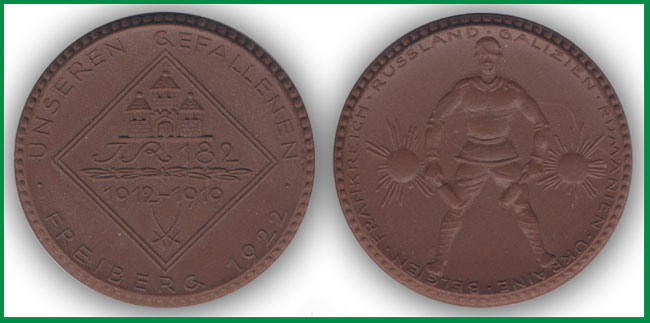123.ID was relieved by Prussian 46.RD (XXIII.RK) in mid-March 1916. After an extended period in Flanders as a labour force and piecemeal relief for Prussian units in line, the entire division was committed to the Battle of the Somme on 7th July. Having survived being buried alive under British bombardment, Pache would later be awarded the Saxon Ritterkreuz des Militär-St.-Heinrichs-Ordens (the oldest German and highest Saxon gallantry award) for his performance as company commander:
Together with his company Ltn. Pache distinguished himself in the battle of the Somme by outstanding courage in the fierce, bloody fighting for the possession of Trônes Wood in the sector of 12. Reserve-Division during the days 10 to 16 July 1916. After II. Batl. / Inf.-Regt. 182 had taken the wood in a magnificent assault on 9 July, it had to repel an extremely strong English counterattack which was pressed home following the strongest drumfire. The Englishmen who broke into the wood were thrown out again by Ltn. Pache after heavy, dogged single combat. Numerous prisoners were taken and the entire position held. It is only thanks to the valiant conduct of him and his men, his vigilance and initiative, that this attack too - driven home by the English northwest of Combles with superior forces - entirely failed.

The battered 123.ID was transferred to the Eastern Front at the beginning of August 1916. On 6th September IR 182 was permanently detached and transferred to the new Prussian 216.ID, with which it subsequently fought in Galicia as part of the mixed German / Austro-Hungarian / Ottoman Südarmee. In November Pache's regiment travelled to Transylvania and fought the Romanians in the Battle of the Olt Valley. Pache was seriously wounded. Remaining on the Romanian front, IR 182 was again transferred from 216.ID to the henceforth wholly Saxon 212.ID in August 1917. Pache had now been promoted to Oberleutnant and returned to duty, but would see no further fighting on any serious scale.

In May 1918, the entire 212.ID was shipped across the Black Sea to support the German-backed Ukrainian government. The Saxon infantry subsequently spent much time in the countryside around Odessa and Mykolaiv, fighting Makhnovist (Ukrainian peasant anarchist) bands and helping to organise the local Mennonite villagers for self-defense against these raiders. IR 182 (by now perhaps the most widely travelled regiment of the Royal Saxon Army) had the good fortune to be transported home by the end of the year and demobilised, while other units of 212.ID found themselves stuck in Ukraine in a political vacuum after the armistice. The last of them were shipped home from Odessa by the French and Greeks in March 1919. The energetic and articulate Pache was highly active in the IR 182 veterans' association, and his letters from the Somme appeared in its published history (for which he also served as the main author) in 1924. His letters from the Wytschaete salient were serialised in the 1930s by the Saxon veterans' newsletter Der Feldkamerad.

Unknown to us at the time of writing the new book, this highly decorated and courageous officer tragically died on 7th December 1943 as an inmate at Buchenwald Concentration Camp. According to camp records discovered by my wife Diana Zachau, the 64-year-old Pache died of "akute Kreislaufschwäche" (acute weakness of the blood circulation). This vague and popular diagnosis suggests death from overwork, exhaustion and hunger. How, where and when he fell foul of the Nazi state is currently unclear.
- << Prev
- Next





